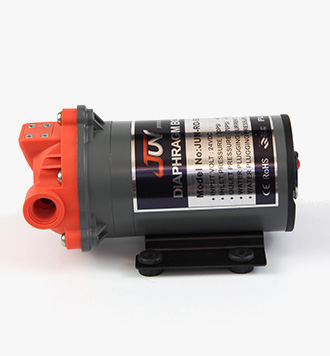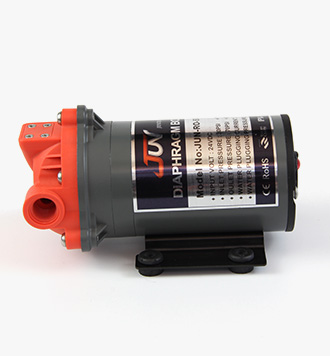Broad Application Prospects of Low-noise, Long-service-life and Brushless-motor-driven Pumps
It has seen a four-decade history for the household water-purifying industry since the first water purifier came into being in China. With their safety and stability in treating complex polluted water bodies, which cannot be matched by other water-treatment processes, the water purifiers, especially the ones by the RO technology, has gradually become the mainstream of the market. However, safe use is not the only concern for consumers—their demand for fresh and healthy water, as well as comfortable experience is increasingly pressing. Currently, the former dominant 50-gallon water purifiers have been gradually replaced by the 400-gallon storage-free instant-drinking ones on the market, and 800-gallon ones are even under development by some manufacturers. However, while obtaining fresh drinking water, the comfortable experience faces challenges: large-sized water purifiers require heavy-duty booster pumps, which increases the noise.

Upon persistent research, the Technical Department of our company finally set up a core R&D objective of “large-flow, small-size, low-noise, small-weight and long-service-life” water pumps, and took the lead in developing brushless DC booster pumps. Since the brushless DC motor, whose characteristics are similar to that of a brush DC motor, is a device with changeable frequencies, it is also called a DC inverter and internationally known as BLDC. A booster pump, which is equipped with a BLDC that is superior to any other motors controlled by variable frequencies or other technologies in terms of running efficiency, low-speed torque, speed accuracy, etc., is not only low in noise, but also has a much smaller size than the same model driven by a brush motor. Its service life is several times that of traditional ones.
The brushless motor, despite its short history in China, is on the road of gradual maturity and fast development technologically. In addition to its wide application in many fields such as model airplanes, medical equipment, household appliances and electric vehicles, it has preliminarily formed a large-scale industrial chain in some regions of China. Especially in recent years, its successful application in household appliances such as air purifiers helps form a market scale of more than 10 million sets. At present, although the brushless motor has not been widely applied in water pumps, its excellent performance outweighs that of traditional ones. We have abundant technical reserves and experience in production of brushless-motor-driven water pumps, and is capable of providing customers with powerful technical support to fulfill divers demands on the consumer market.
Note: the brushless motor and the brush motor are similar in structure, and both have rotors and stators, except in that the structure of the former is opposite to that of the latter; the rotor of the brush motor, a coil winding, is connected to the power take-off shaft, and the stator is a permanent magnet. In operation, the commutating brush supplies power to the coil. The rotor of the brushless motor, a permanent magnet, is connected to the power take-off shaft, and the stator is a winding coil. The reason why it is called a brushless motor is that the commutating brush in a brush motor for alternate transformation of the electromagnetic field is removed. When a brushless motor is activated, the power is supplied through the circuit board in a commutating manner, which causes less wear to motor components, thereby ensuring a long service life and low noise.
Compared with the brush booster pump, the brushless one has the following advantages:
(1) No brush and low interference
There is a typical characteristic of the brushless motor, that is, it does not generate electric sparks during operation like a brush motor, which significantly reduces the interference of the sparks to remotely-controlled electronic devices.
(2) Longer service life:
Brushless motor: its service life can reach tens of thousands of hours, and the main cause restricting the service life of a motor lies in the quality of other mechanical components.
Brush motor: it normally has a continuous service life of more than 1,000 hours, and brush replacement is required when the upper limit of hours have been reached, otherwise the motor fails to work.
(3) Applying effect:
Brushless motor: it is controlled by variable frequencies, which allows easy controlling from a few rounds per minute to tens of thousands of rounds per minute.
Brush motor: once it is activated, the operating speed is normally constant, and it is not easy or impossible to adjust the speed.
(4) Energy saving:
BLDC, which realizes the variable frequency control by adjusting the current, saves more energy than the brush motor with a fixed frequency.
(5) Repair and maintenance:
For a brush motor, its brush needs to be replaced on a regular basis, otherwise the motor can be damaged. In contrast, the brushless motor, which has a service life ten times or more that of the brush motor, basically spares the daily repair and maintenance, unless other external components are damaged.
(6) Noise level
An overall comparison between the two types of motors shows that the noise by a brushless DC booster pump is about 10Db lower than that of the same model with a brush pump, and the noise is mainly caused by water flow in the pump according to the measurement after decomposition of the pump.


 Previous
Previous







